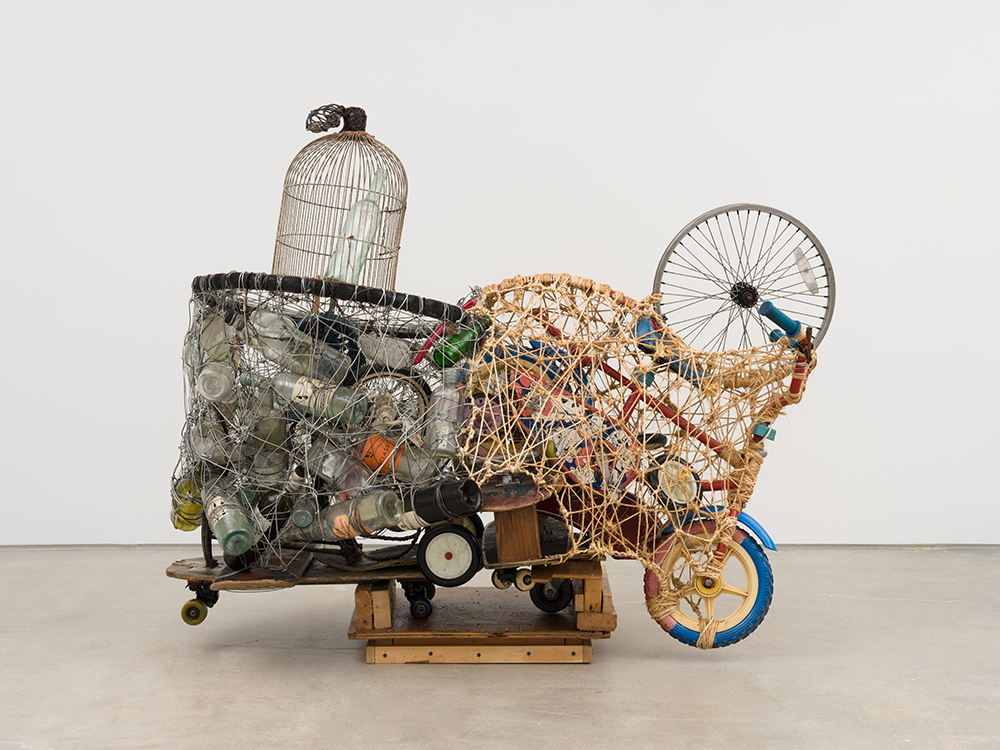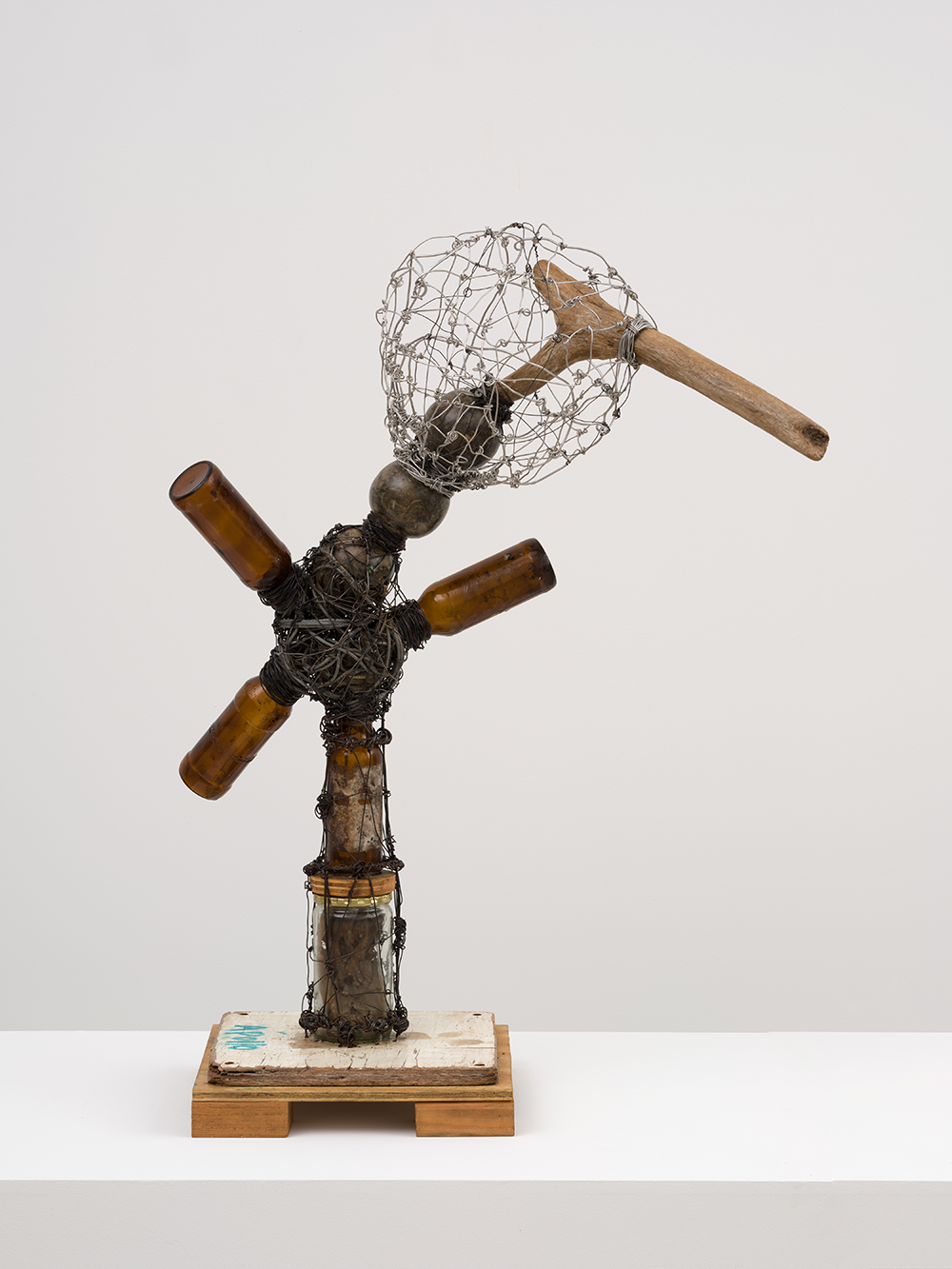Arthur Simms’ appealing ad-hoc sculptures are often fabricated from found materials with representational as well as abstract qualities. Simms was born in Jamaica in 1961 and came to the US in 1969. Many of his works are autobiographical, relating to his journey to the States, as well as what he learned as a child in Jamaica watching artisans make vehicles and other functional objects from found wheels and boxes. At an early age he began to make his own toys from wood, plastic and other discarded materials, and these sources remain essential to his practice today.
“The Miracle of Burano” is Simms’ first exhibition in Los Angeles. It feels like a mini-retrospective as it introduces the LA audience to his practice, including works from the 1990s to the 2020s. Many of his sculptures allude to carts or ships, while some incorporate wheels and bicycle parts, as well as toy cars. Chester, Alice, Marcia, Erica And Arthur Take A Ride (1993) is one of the earliest pieces in the exhibition. The title refers to the trip that brought Simms, his father and three sisters, from Jamaica to New York. In this sculpture, a web of thin rope encases wooden cross-beams that suggest the shape of the figurehead found at the bow of a ship. This assemblage balances on a tan milk crate and, because it is situated in the middle of the gallery, it can be viewed from all sides. While Simms does not illustrate the nuances of the journey, the rawness of the work hints at a difficult voyage. Red Bird (2008) features irregularly shaped bamboo rods fashioned together to create the outline of a sailboat. At the helm sits a small plastic red bird that first gives viewers pause, then elicits a smile. The work is simultaneously humorous and delicate.

Arthur Simms, Caged Bottle, 2006. Courtesy of Karma, New York.
Simms’ signature style is to wrap incongruous objects with wire or rope and assemble them into either large or small-scale towers in which they take on new meaning through juxtaposition. Apollo (2011) could reference the Greek God, as well as NASA’s rockets. In this work, Simms combines wood, glass jars and bottles, tying them together with wire so they appear like a cartoon figure floating in space. What could be seen as the figure’s head is a wire-mesh globe that is bisected by a piece of wood shaped like a police baton. The work has a freeform feeling of lightness despite its rough-hewn materials. Caged Bottle (2006) is another playful amalgamation of rope, wire, bottles and bicycle wheels. The sculpture resembles a dysfunctional cart filled with recycled detritus.
In this elegant display, some of the works sit on the gallery floor, while others are placed on a low elevated white, curved shelf, separating the large from the small works, giving them all equal due.
The use of dysfunctional and abandoned non-slick materials infuses Simms’ works with a sense of nostalgia and history. Though recently created, they hearken back in time and draw from both his Jamaican heritage and his current surroundings. His poetic works speak to issues of relocation with both grace and humor.


